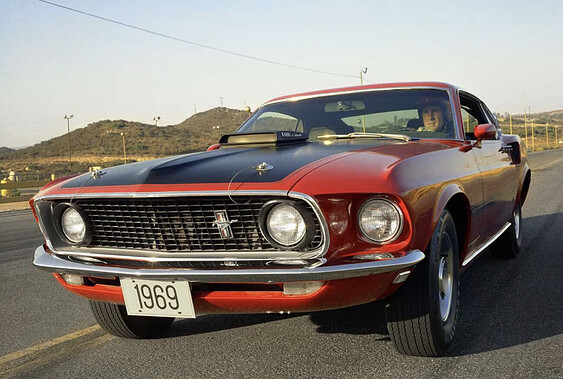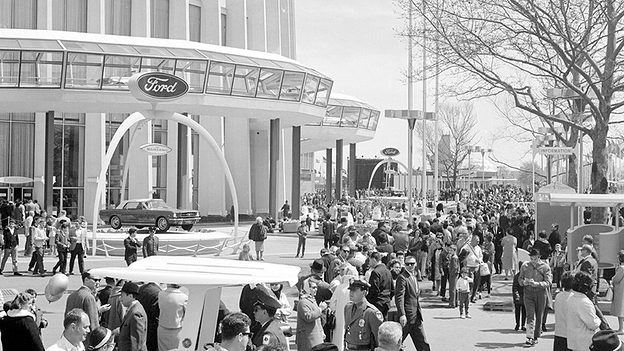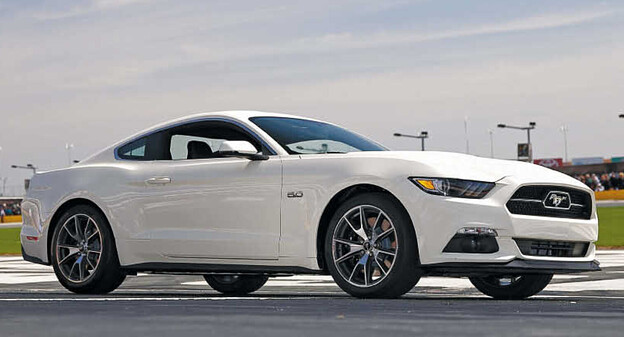Ford was early known for their breakthrough in assembly line production, building the model T and introducing the first mass-produced V-8 engine… many more
One thing that lives in the auto enthusiast heart is the ford mustang…
I honor to share history insights on designing a mustang
Gale was hired at ford, lincoln-mercury design studio, and helped design the rear end of ford 1957. Gale found that whether as a sketcher or as a boss, you often had to be dreamer when designing. “I always tried not to limit my designer and let them design with our limit,” Gale said. The free flow of creativity helped keep designers on their toes and to think outside the box.
The first sketch concept, of ford mustang 1964
Birth of Ford Mustang
Ford wants to expand their product line by developing new and more existing cars.
Lee Iacocca joined the ford in 1946, The Launch of Mustang, where ford needed a new car for the new generation. Iacocca led the group to identify the market that could lead to a concept of a new vehicle. Time was of the essence. Noted Iacocca,
“We’d hit on such a good thing that we had to get moving before somebody else could come along and beat us to it!”
Design Contest, lacocca pushed forward with the idea of a sporty compact. He realized that developing a totally new car was an expensive proposition, at the time costing upwards of $400 million, a scenario that would be surely rejected by Henry Ford II. Special Projects Assistant Hal Sperlich came up with the solution—build the new car on the Falcon’s already existing chassis, drivetrain, and suspension to save both time and money. It was a brilliant no-brainer.
But before Iacocca could approach Henry Ford II with an official proposal, he needed a design, something in clay, to plead his case to make the investment into a new sporty compact. But time was running out. Less than twenty-eight months remained before the target introduction date of April 1964. During the first half of 1962, Iacocca viewed no less than eighteen clay models. None impressed.
So he initiated a design competition between the three Ford Motor Company styling studios—Ford, Lincoln-Mercury, and Advance Projects. On August 16, 1962, Iacocca reviewed six clay models and was immediately drawn to a design from Joe Oros’ Ford Studio that included a Ferrari-like grille opening, tri-lens tail lights, and side sculpture-ing that implied rear brake cooling scoops. “One thing hit me instantly,” Iacocca said later. “Although it was just sitting there, the brown clay model looked like it was moving.”
When Iacocca gambled by inviting Henry Ford II to the styling courtyard for a look, the boss was enthused but not overly excited. “I’ll approve the damn thing,” HFII reportedly said. “ But once I approve it, you’ve got to sell it, and it’s your ass if you don’t!”
Henry Ford II officially approved the project on September 10, 1962. Iacocca had only eighteen months to take his launch from concept to showroom.
Ford’s new sporty car was known by several names, including the in-house “T-5” code and the more informal “Special Falcon.” By late 1963, just a few months before introduction, the need for a name became critical as marketing ramped up its efforts toward promotion and advertising.
There were many suggestions. Henry Ford II offered “Thunderbird II,” a designation that was ignored. Dave Ash and Joe Oros pushed for “Cougar,” the name for the Ford Studio’s winning clay design. They even sent Iacocca a die-cast Cougar grille emblem with the note, “Don’t name it anything but Cougar!”
Finally, John Conley from Ford advertising agency J Walter Thompson was dispatched to the Detroit Public Library to compile a list of animal names. From a list that included everything from Aardvark to Zebra, one stood out: Mustang. J Walter Thompson preferred it because it had “the excitement of the wide-open spaces and was American as all hell.”
There was also a connection to a Ford two-seater sports car concept that was making the show-car rounds. It was called Mustang, initially suggested by stylist John Najjar to honor the P-51 Mustang fighter planes from World War II. As Najjar related to historian Bob Fria, “My boss, Bob McGuire, thought it was too ‘airplaney’ and rejected that idea. I again suggested the Mustang name but with a horse association because it sounded more romantic. He agreed and together we selected the name.”
April 14, 1964 the mustang grand debut for press and april 17, 1964 for the general public at ford pavilion.
1966 February, the company sold their first one millionth Mustang rolled off the line.
1969 Ford Mustang Model: GT350, GT500, Mach 1, Boss 302, Boss 429
From 1964 to 1968 the mustang went through small changes, but I think the year 1969 and 1970 is special for the mustang as a muscle car. Change came to the Mustang again for 1969–70. A sheet metal overhaul delivered a more muscular appearance, especially for the new “SportsRoof” fastback. By the end of 1969, the Mustang was available with eleven engines, from the six-cylinder to the 428 Cobra Jet, including the midyear Boss 302 and Boss 429, both created to legalize engines for racing. Two new models were added to the lineup—a Mach 1 for a “speed of sound” image and luxurious Grande for the hardtop. Both continued into 1970 on a mild Mustang redesign.
Design Dignity, a many of cars have the original design from the past but few are keeping aesthetics of originality. Ford is in one of them, keeping the dignity from 1969 as a muscle car and still famous for their fans. This car has gone through various generations, changes and improvements and people like it. If you feel the same way as mustang, share your words to cheer for mustang…




